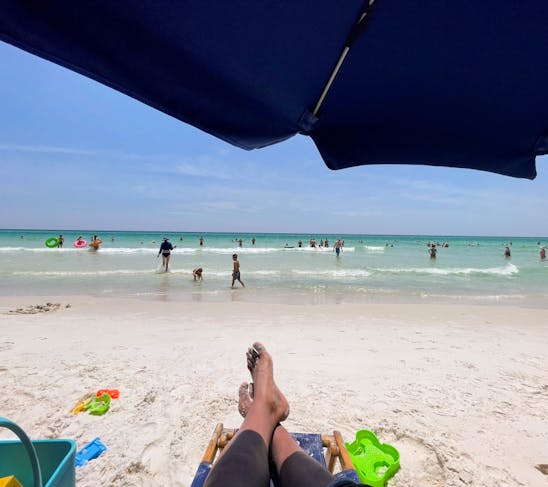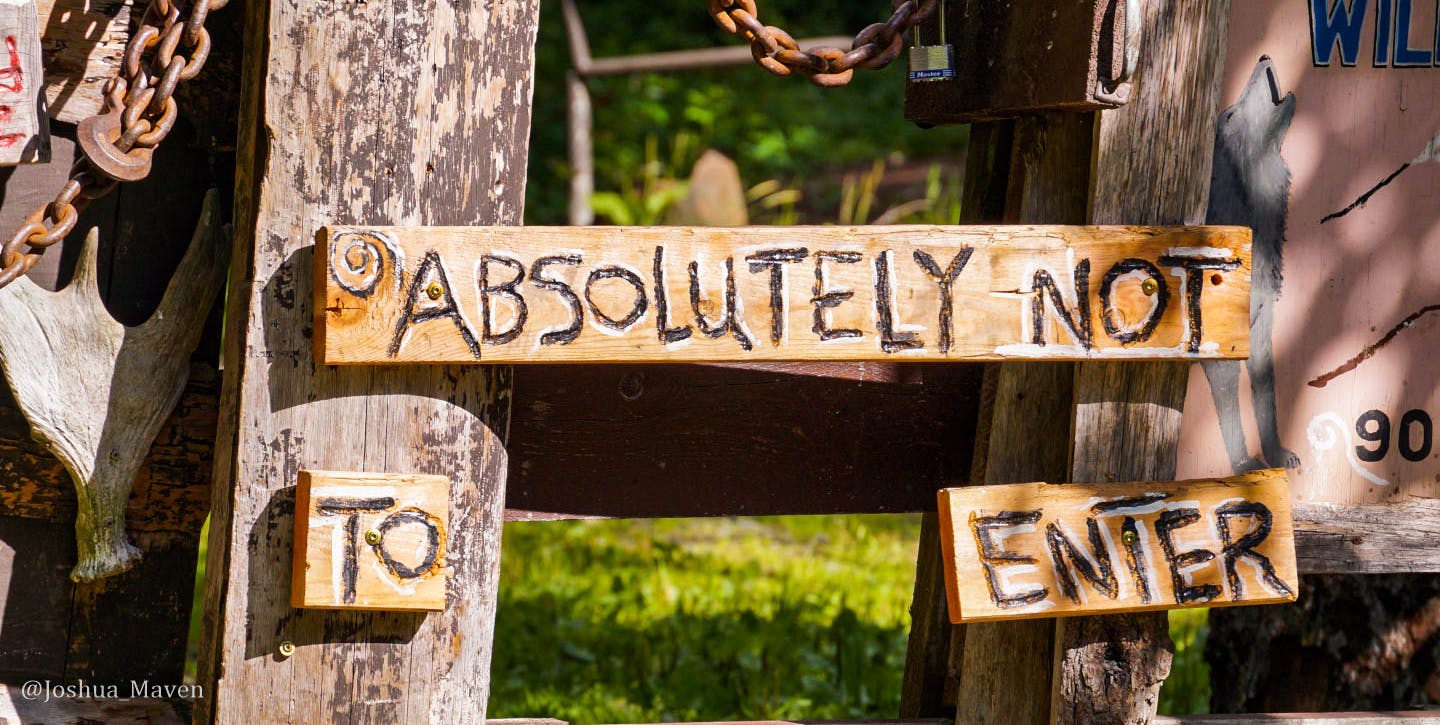It's 5:00 p.m. on Saturday, July 18, 2015, and I'm sitting on a park bench in front of Chilkoot Lake, located slightly up the street from where I ran into a brown bear the night before—almost literally. I had just picked up my rental car around 9:45 p.m. and decided to make the nine-mile drive east of town to the Chilkoot River on a stakeout mission to spy on unsuspecting brown bears. It was surprisingly darker than usual, and I had to do a double take when I spotted what looked like a bear running in the middle of the road toward my car.
I quickly pulled over to assess the situation, at which time the bear suddenly veered into the river, giving me a perfect viewing spot less than 20 yards away as it waded in the water, dining on the fatty portions of king salmon. It was better than what I had hoped to see, and the experience served as quite the precursor to my wildlife bonanza the next morning.
I arrived at the Kroschel Wildlife Center at 9:30 a.m., my camera charged and my mind energized from the night before. I had driven by the center plenty of times on my way to and from my cabin, but I never knew what lay behind the mysterious wooden fence with warning signs that read, “Extreme Danger! No Entry!”
I happened to be floating the river with the owner of my cabin the week before when he suggested I make an effort to meet a man named Mario, who he claimed was a “falconer,” or someone who trains birds of prey, specifically falcons and hawks, to hunt. Although its origins are uncertain, many believe the art of falconry began as early as 2,000 BC with the ancient Chinese and, over time, spread west through Mongolia, the Middle East and Europe until it eventually reached the shores of the US in the early 1900s.
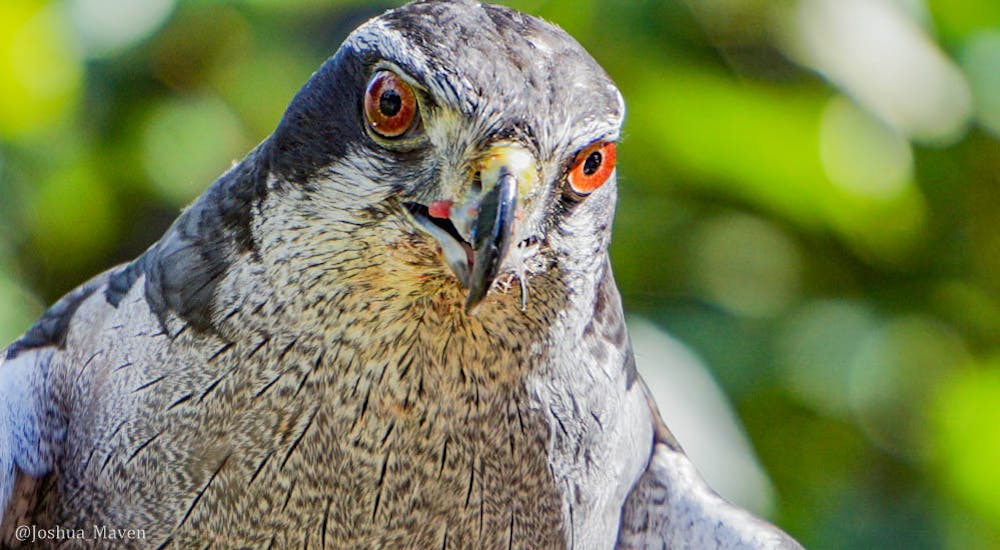
Since one of the chapters in my book is called, “How to Train Your Falcon,” I went ahead and set up a time to visit the Kroschel Wildlife Center and was greeted at the same wooden gate by Mario, who was accompanied by a red-tailed hawk perched on his fist. Even with his hand concealed underneath a three-ply leather glove, Mario was quick to point out that the hawk, if it so chose, could still break his bones with the vice-like grip of its talons.
Mario reiterated what I already knew to be true, stating that birds of prey are nature’s elite predator, perfectly adapted with a hunter’s skillset unmatched in the animal kingdom, and he defended the claim by saying a peregrine falcon was recently clocked at a new record speed of 262 miles per hour.
Unfortunately, there were no peregrines at the center, but Mario did reveal another popular species of bird used in falconry: the high strung, red-eyed goshawk, whose far-too creepy stare was enough to convince me to incorporate it as the main hawk character in my novel, which I had already selected a name for—Scorch—but had yet to pinpoint a specific species.
The wildlife center is not only home to Mario’s raptors, which also includes a snowy owl, but its primary function is to provide a refuge for orphaned animals, some of which I had an opportunity to see, including a gray wolf, red-tailed fox, lynx (including a lynx kitten), pine marten, porcupine, short-haired weasel, moose, reindeer and grizzly bear.
Throughout the tour, Mario, a wildlife expert and filmmaker, provided a wide-range of interesting ecological facts about each of the animals he presented, beginning with the center’s resident gray wolf. After convincing us all to howl, hoping entice the wolf into a quick contest, Mario discussed the importance of these top predators in maintaining a thriving ecosystem.
He used the reintroduction of wolves and its subsequent effects to Yellowstone National Park as an example. Since wolves prey primarily upon the weak and diseased, he said, their return to Yellowstone in 1995 has helped secure a much healthier elk and deer population.
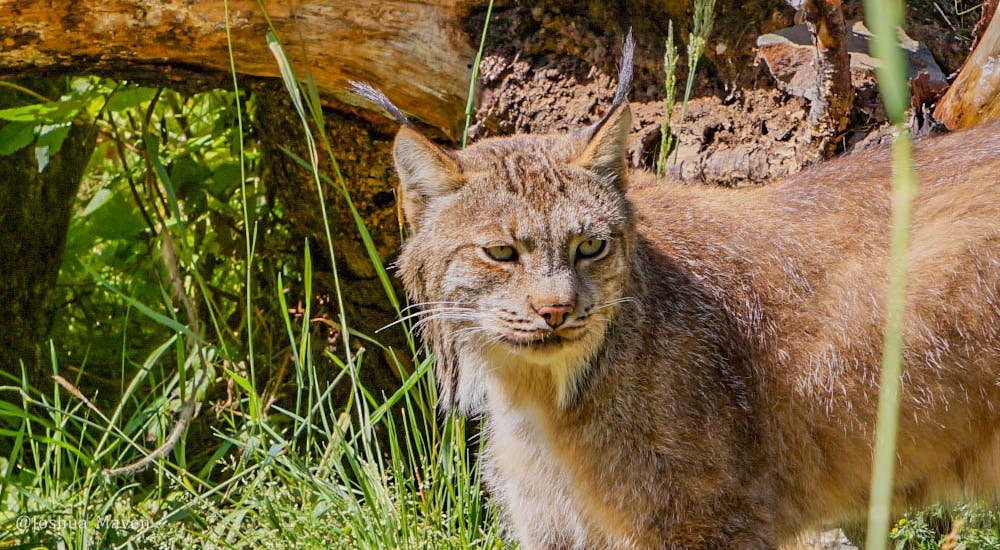
It was a particularly warm Alaskan morning and taking refuge in the shade of our next exhibit was a predator better suited for the snow. Essentially a large, white bobcat with long, black hairs extending from the top of its pointed ears, the large paws of the lynx allows them to travel with ease across the snowy terrain, while also providing them with the ability to leap upward of eight feet into the air.
Canada and Alaskan lynx feed primarily on snowshoe hare, so much so that their populations are known to dramatically plunge in response to the cyclical decline in hare numbers that occurs about every ten years. Mario also introduced us to an orphaned lynx kitten that he was in the process of raising, his rearing techniques of cats borrowed from his studies of the “maharajah” of India, known for their ability to train cheetahs.
Next, Mario introduced us to two animals whose relationship with present and former Mongolian tribes were far too fascinating for me not to include, the first being the moose. Mario said that approximately 100 moose-riding tribes existed in Mongolia prior to the reign of “Ivan the Terrible,” the first tsar of Russia from 1547 through his death in 1584.
It’s believed that when Ivan’s horseback army encountered the moose-mounted Mongols, the horses immediately scattered in fear. Good ol’ Ivan considered the moose riders to be such a threat that he ordered their eradication and subsequently banned all moose-training techniques, which later resulted in the loss of the traditional methods used by the natives to produce moose milk and cheese.
The next animal we encountered at the center, the reindeer, posed a far lesser threat to Russian security. Still in existence today, although marginalized by encroaching economic interests, Mongolian reindeer tribes are known to inhabit the areas north of the Arctic Circle.
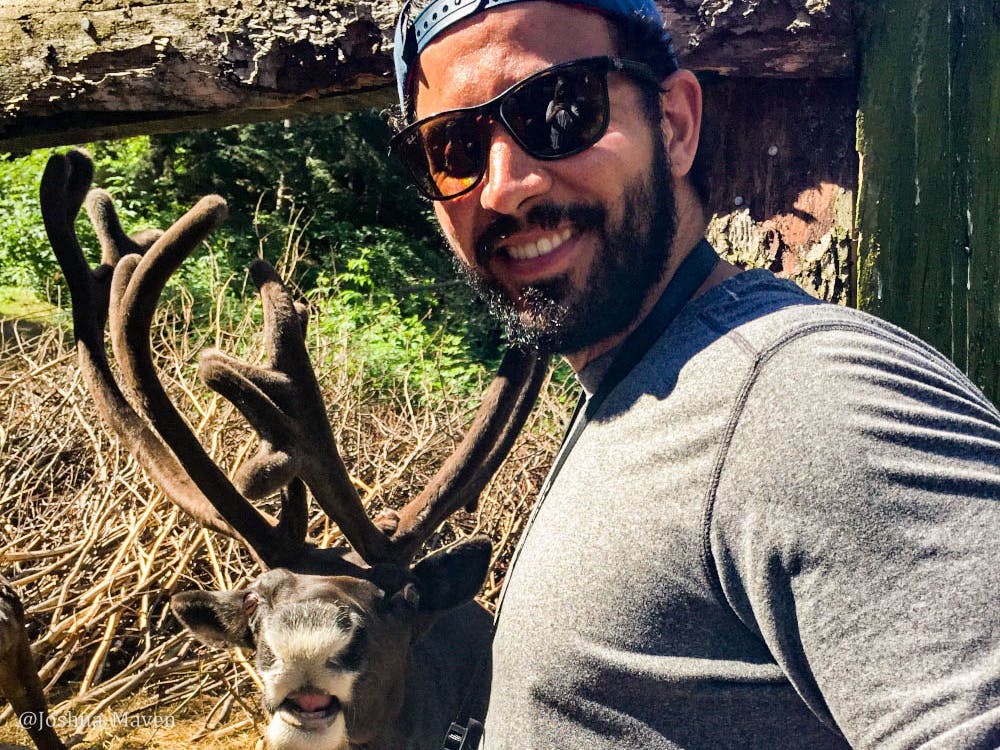
Russian governments throughout history have levied taxes on the tribes, which are paid in reindeer meat and pelts. More interesting, in my opinion, was listening to the theory that the idea of Santa Clause emanated from these reindeer people.
Each winter solstice, tribal shamans would drop off “magic mushrooms” to the villagers as gifts. Since the entries to the homes were generally blocked with snow, the shamans would deliver the goodies via a slot in the roof. This particular red and white-spotted mushroom, amanita muscaria, is also known to grow under conifer trees, the same as our present-day Christmas trees, and once under its hallucinatory spell, villagers would witness out-of-this world images, such as flying reindeer!
Unfortunately, there were no mushrooms available for me to validate the theory, but when I arrived home later that night, the neighbors did hook me up with a potent alternative, including an assortment of king and sockeye salmon, bear sausage and even a moose burger! Feasting on that kind of cuisine was a trip in itself!
Follow me on Instagram at @Joshua_Maven or @HonchotheVan, on Twitter @MaventheRaven or Facebook at Facebook/TheLastImperial.
Midlife Revival
It’s Friday, July 11, 2025, and I just completed my second French lesson of the week. I’ve been working with an online tutor for the past six months in hopes of communicating with my 22-month-old son as he advances in his mother’s native tongue. I’ll be honest, learning a new language has proven quite the challenge. My tutor insists that I’m making progress, but it rarely feels that way to me.

Postcards to Samuel
It's 8:00 p.m. on Wednesday, July 31, 2024, and I'm trying something a little different with this post. Instead of my usual blog format, I compiled a series of postcards that I wrote to my 10-month-old son, Samuel, during a two-week road trip I recently took to the Great Lakes. I plan to give him these postcards, along with others from future trips, when he's older in hopes that they will inspire him to chase his own dreams, whatever those might be.
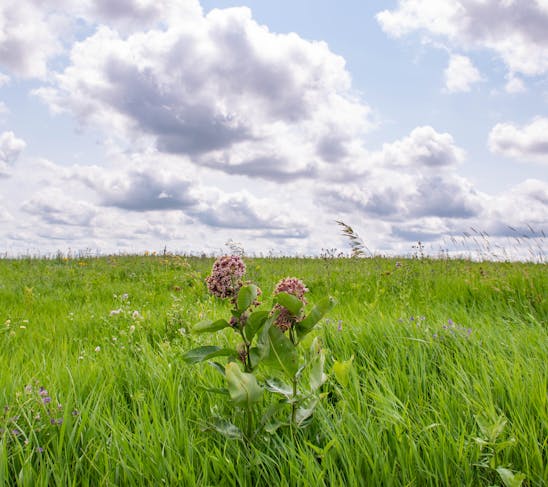
False Summit
It’s 12:00 p.m. on Sunday, July 30, 2023, and I’m lounging at the beach enjoying the white sands and green waters of Florida’s Emerald Coast. Today is my 40th birthday and a relaxing getaway is exactly what I needed after a two-week road trip out west, where I hiked the highest peaks of Colorado and Arizona. The reasoning behind my latest excursion was simple: if I’m going to be “over the hill,” then I might as well be standing on top of a mountain.
